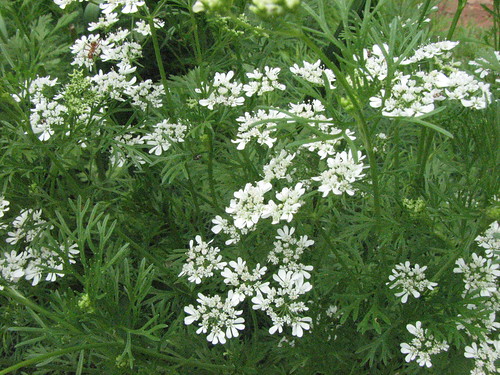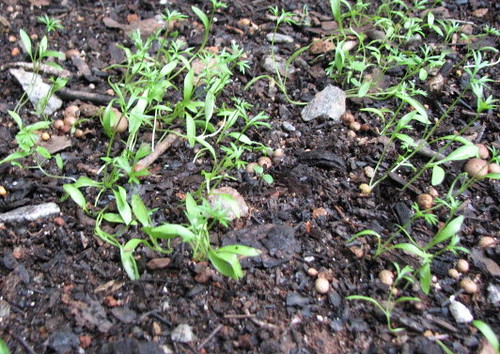How to Grow Slow-Bolting Cilantro ‘Delfino’ in the Hot and Cold Months
Though it is the same species as regular cilantro, the variety ‘Delfino’ looks like a different plant.
Looking more like a fennel than a cilantro, the ferny foliage of this 2006 All American Selections winner also has the same strong, sweet flavor as its large leafed counterpart. It makes a wonderful garnish, but it certainly stands on its own in any recipe calling for cilantro.
I have had no trouble getting this cilantro to grow any time of the year. I sow successive patches of it all season long with equal success whether it is March, July, or November. I generously sow the seed directly in the garden because I like to have small carpeted patches of this herb. The crucial element to growing it in hot weather is making sure that the top inch of the soil crust does not dry out until the seedlings are about 3″ tall. After that they will become increasingly drought tolerant, so you can gradually slack off to a normal watering regimen.
Though I do find that it bolts faster in the warmer months than the cool ones, it does seem to do it more slowly than regular cilantro. There also seems to be more culinary-quality foliage even when the plants do begin bolting. I’ve hypothesized that the thinner leaves become less heat and water stressed than broad-leafed cilantro.

This is young 'Delfino' cilantro growing happily in July. I seeded it in part shade to reduce stress on the plant. My bay laurel tree, okra, and tithonia flowers shade it during part of the day.
I’ve also found that planting it in part shade during the long days of summer can really help extend the harvest time. This may seem like common sense in an area blessed with so much sun, but it is easy to get caught up in a seed packet’s “full sun” recommendations. Often the growing instructions that come with our plants and seeds were developed for areas with weaker sunlight than ours. Cilantro only needs 2 – 6 hours of sunlight in the summer, depending on how far north you are.
Because of this I tuck it into any dim spot in the garden greater than one square foot in diameter. It’s great for filling in holes left by spring lettuce or unexpectedly shady spots under tall crops.

'Delfino' continues to look ferny even when it begins to flower. The seeds are easy to save for another season or useful as coriander.
I particularly love using scissors to shred the delicate leaves over the top of salsa — it looks like fine confetti. ‘Delfino’ also produces excellent coriander if you prefer to grow it for the seeds. If you want to save seeds for replanting, make sure you do not have broad-leafed cilantro in the vicinity or it will cross-pollinate.
You can purchase this variety from Pinetree Seeds or John Scheepers Kitchen Garden Seeds.
One thought on “How to Grow Slow-Bolting Cilantro ‘Delfino’ in the Hot and Cold Months”
Comments are closed.


Pingback: How to “Permiculturefy” an Urban Farm | Appalachian Feet